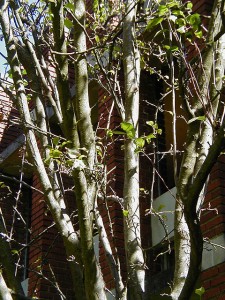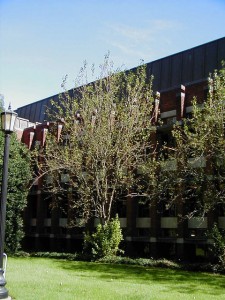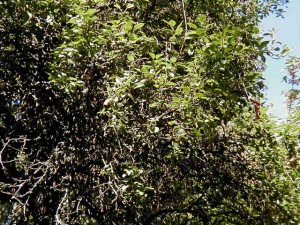Family: Rosaceae
Ornamental pears have become very popular trees for urban areas because of their attractive flowers, uniform growth, and small size. Their main shortcoming is that the extensive branching and dense foliage makes the trees vulnerable to damage by wind and snow.
Callery Pear
Scientific name: Pyrus calleryana
 This species of pear was discovered in central China in 1858 by the French missionary Joseph Callery. Over the past century it has been widely planted around streets and houses across the United States. In the spring it is covered with white blossoms and in the fall red leaves. The fruit, when present, is very small and sparse. There are many named varieties for this tree.
This species of pear was discovered in central China in 1858 by the French missionary Joseph Callery. Over the past century it has been widely planted around streets and houses across the United States. In the spring it is covered with white blossoms and in the fall red leaves. The fruit, when present, is very small and sparse. There are many named varieties for this tree.
View tree page and map.Pear
Scientific name: Pyrus communis This is the edible species of pear that you can buy in the supermarket. The tree is pyramidal with strongly vertical branching and it can grow to 40 feet or more. A native of Europe and Western Asia, it is long-lived. Its leaves are leathery, glossy, and bright green. Some people dislike the smell of the blossoms.
This is the edible species of pear that you can buy in the supermarket. The tree is pyramidal with strongly vertical branching and it can grow to 40 feet or more. A native of Europe and Western Asia, it is long-lived. Its leaves are leathery, glossy, and bright green. Some people dislike the smell of the blossoms.
View tree page and map.